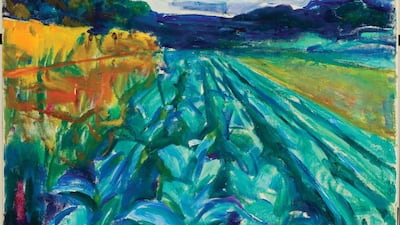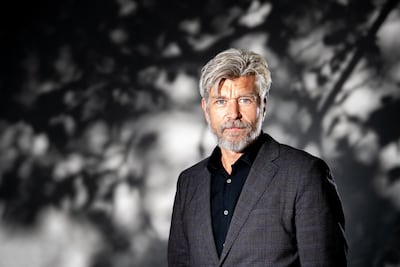Last year, anglophone readers were able to engross themselves in the translation of the sixth and final book in Karl Ove Knausgaard's magisterial My Struggle series. At more than 1,000 pages, and combining up-close-and-personal depictions of individual angst and family drama with a 400-page essay on Adolf Hitler, The End was weighty in every sense of the word.
While waiting for the English translation, aficionados of the Norwegian writer could turn to his Seasons quartet to tide them over, a worthy yet patchy project in which the author muses on the "wonders of life". Those include both the sublime (subjects such as the sun, intelligence and van Gogh) and the ridiculous (manholes, lawn sprinklers and toilet bowls).
'So Much Longing in So Little Space'
Knausgaard shows no sign of running out of steam, either. So Much Longing in So Little Space: The Art of Edvard Munch is his take on the life and work of his compatriot painter. Deftly translated into English by Ingvild Burkey, and including colour reproductions of Munch's paintings, the book comprises Knausgaard's views on the artist's work, an examination of the creative process, and reflections on how art imitates life.
It starts with a painting and a puzzle, as Knausgaard examines a simple, almost featureless work by Munch from 1915, Cabbage Field, and tries to put his finger on how it manages to achieve its magical effect. "I feel as if something is bursting within me. And yet it is just a field of cabbages," he says.
After stating that the painting fills us with emptiness and conveys a sense of yearning – "a longing to disappear and become one with the world" – Knausgaard gives us a portrait of this versatile artist – "a painter of the inner life, of dream, death" – and identifies the pivotal events and character traits that may have informed the artist's work. Munch was still young when his mother and older sister died, and the artist had a fear of intimacy with women. Knausgaard sifts through Munch's vulnerabilities and idiosyncrasies, analysing them against his artistic output, before searching for significance in the motifs the artist recycled throughout his career.
For example, Munch portrayed his younger brother, Andreas, in two works that elicit varying responses: in the picture made in 1882, when Munch was 19, Knausgaard sees the work of an inexperienced painter trying to find his way; in the other, completed 53 years later, Knausgaard draws our attention to a pronounced shadow across the boy's eyes. The author claims that "marked him with death".
More of this fusion of art, biography and art evaluation would have been welcome in the book. But after 50 pages, Knausgaard turns the spotlight on himself. From here the book begins to live up to its classification of "memoir/art". Fuelled by coffee and cigarettes, Knausgaard sits writing at his desk amid plunging temperatures and speaks directly to his reader. From this position, he shares his thoughts and accounts of the research trips undertaken to get closer to Munch's artistic practice.
Knausgaard describes his first impressions of Munch's paintings, often making intriguing cross-cultural comparisons. He has conversations with contemporary artists and photographers, both in Norway and beyond. He visits the farm where Munch was born and the landscapes that inspired him, buys a Munch painting at auction and, in an equally unprecedented move, agrees to co-curate an exhibition of the artist's work. Knausgaard rises to this challenge and sets about selecting paintings for the show, stipulating that they must be less familiar pieces. As a result, Munch's famous masterpiece The Scream doesn't get a look-in.
Knausgaard's picture-by-picture discussions with experts are as refreshing as they are enlightening, as they focus on little-known and seldom-seen paintings from the three main stages of the artist's oeuvre. Frustratingly, some of the paintings under scrutiny are absent from the images shown in the book. Either we have to seek out the works elsewhere or are left to take Knausgaard's appraisals on trust.
On the occasions when we are able to view a picture and then see it through Knausgaard's eyes, such as the mesmerising Inger Munch in Black, one of the author's favourite works, we find his critiques perceptive and his arguments persuasive. What could have been a blandly conventional art history guide is instead an exhilarating, free-flowing jumble of sharp dialogues, shrewd observations, searching meditations and also sound judgments.
Knausgaard is also not afraid to ask the big questions, such as: what does this painting want of us? What makes a work "good"? And why is Munch's art still relevant?
Knausgaard comes to the conclusion that Munch's gifts "lay in his ability to paint not only what his gaze took in, but also what that gaze was charged with". Knausgaard's own gifts – such as his roving eye, inquiring mind and original thoughts – are on full display here, too.



